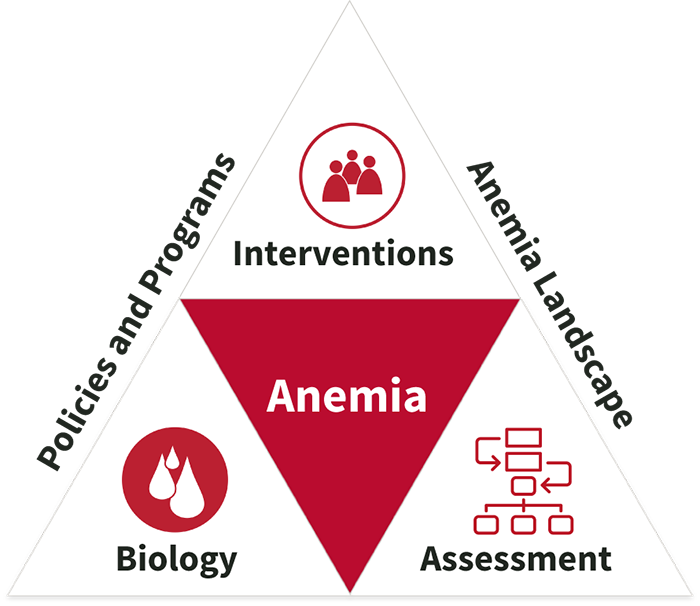Infections account for a large proportion of anemia, especially in regions with a high anemia burden such as sub-Saharan Africa and Oceania. In these regions, young children have the highest prevalence of anemia and total years lived with disability due to anemia. Several infections are strongly associated with anemia, including parasitic infections such as malaria, hookworm, and Salmonella.
Anemia may also complicate severe acute respiratory syndrome coronavirus 2 (SARS-CoV-2). Anemia and infections that cause anemia are major causes of hospitalization and death in children in endemic areas. The interactions between anemia and infection are numerous, complex, and may be bidirectional. Anemia can be a factor in increased infections. For example, iron deficiency anemia contributes to a suppressed immune response since iron is essential for the development and function of immune cells. Anemia is also associated with increased gut permeability and may mediate infection with enteric pathogens.
On the other hand, iron deficiency anemia has also been associated with protection against malaria; anemia has been shown to reduce the invasion and growth of malaria parasites in ex vivo studies (an effect that is reversed by iron supplementation). Infections can cause anemia by increasing hepcidin production and decreasing the mobilization of iron, required for the formation of red blood cells, from body stores.
Research priorities about the intersection of anemia and infectious diseases include quantifying the effects of infection on risk of anemia and the proportion of anemia that would be prevented by infection control. Preventing and treating infection, and especially malaria, should be an integral strategy for the management of iron deficiency and anemia in areas of high infectious disease burden, especially for children living in sub-Saharan Africa, where concerns exist regarding the safety and efficacy of iron interventions.
We found 19 resource(s)



